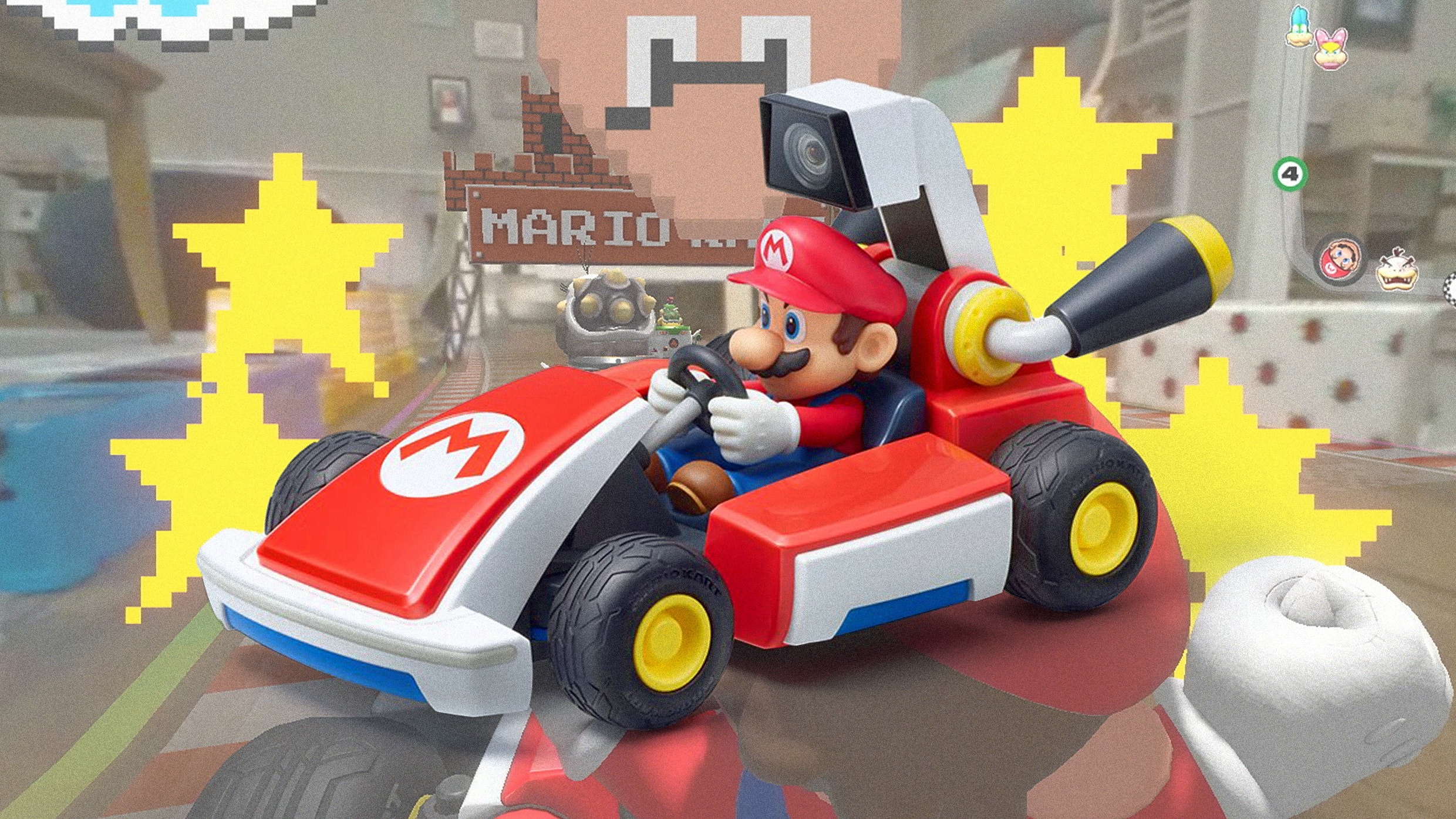There’s an old truism in gaming circles that Nintendo is a toy company at its core. These are both praise and maul, expressing a sense of wonder at the company’s ability to take advantage of childish playfulness and amazement in some of its esoteric material decisions. Mario Kart Live: Home Circuit is perhaps the purest expression of the ethics of “Nintendo as a toy company”. On the one hand, it revolves almost entirely around a real toy: a small go-kart equipped with a camera that you use to rush into your real home. In a broader sense, however, it behaves as the simplest toys do by only giving back what they dedicate to creative play.
That’s because the central pillar of Mario Kart Live is the creation of your own tracks. The game comes with four numbered goals that you can use to define your course. These are made from folding cardboard, like the natural evolution of Nintendo Labo. Once you have set your track and all the real-world objects as harmful, you must go through them once in the style of the pace car before starting the race. If you choose the main Grand Prix mode, your Augmented Reality (AR) circuit will be filled with four cooperative opponents, and then you will leave for the races.

Once you actually participate in a race, it works just like any other Mario Kart game. You keep an eye on the screen – watching your real Kart is a surefire way to lose – and you will see visual effects such as object blocks and virtual harmful on the track. And although the Kart moves relatively slowly in its slowest setting, it actually looks pretty fast on the screen when the camera is so low on the ground.
Surprisingly, it is the Magical Moment of the game to see how well the usual Sequel to Mario Kart mechanics has been translated into this new Format. The drift actually works exactly as you would expect, at least on the screen, if you pull a little crookedly, then suddenly increase the speed. Mushrooms give you a longer boost, while harmful and obstacles slow down or stop your Kart completely. The body Go-kart even drives noticeably faster at 150 cc and 200 cc than the beginner 50 cc.
Seeing how the usual Sequel to Mario Kart mechanics has been translated into this new Format is really the Magic Moment of the game.

Your reward for going through these events and collecting coins is customization options. You can exchange your Kart, your racer’s outfit and your horn. These are cute effects, and although they only appear on the screen, they have a good sense of variety. I’m in my pirate Mario outfit, who exchanges his traditional cap for a giant with three spikes and completes the Set with an eye patch. However, the parts of the track themselves are more important. These actually have an impact on the Gameplay by offering you an ever-increasing range of options for your DIY tracks. Door types allow you to add new in-game effects to your four doors, while stage types add general harmful such as lava or ice blocks.
The best parts of Mario Kart Live are the ideas that should return in the main series. A Magikoopa effect spontaneously reverses the track, similar to the mirror mode, but even more dynamic and skillful. My favorite addition, a G-key item, produces a collectible set of musical notes, then rewards you with an additional box of items separate from the usual ones available at the doors.
Other new ideas are less successful, especially due to the real bodyity of the game. A strong wind effect is designed to make you feel like your Go-Kart is swerving, but in practice, you just feel like you are losing control of your remote-controlled Go-Kart in frustrating and inappropriate moments. A similar action is sometimes seen on the Magikoopa, because you could be in the middle of the turn when the Kart is suddenly tasked with interpreting your direction in reverse.

Losing control of your Go-Kart in this way increases the chances of bumping into a real table leg, a stairmatter or a stray pet. Unlike a traditional Mario Kart game, Lakitu does not automatically take you out of the danger zone. You have to manually back up your Go-kart and get back on the track yourself, which adds to the Frustration when you feel like the wind has taken control away from you.
This real bodyity also manifests itself in other non-ideal ways. Mario Kart games usually get a lot of mileage out of their verticality, and Mario Kart 8 has put an emphasis on wildly swirling anti-gravity tracks. But the go-kart toy struggles with relatively flat slopes, so you cannot reasonably build a track that takes full advantage of the hills and valleys. I’ve never been brave enough to take a leap, and I can’t recommend it – the toy is relatively hearty, but I wouldn’t risk damaging it, especially considering the 100 price tag. After a while, All the tracks that you have created on the same flat surface will have the same feel, much like the flat tracks of Mode 7 from the very first Mario Kart game.

